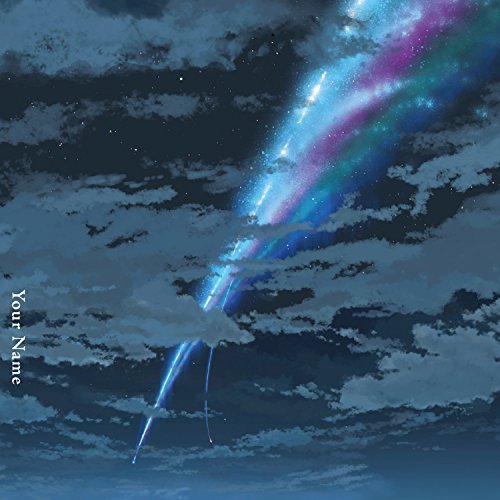One of the strengths of Kimi no na wa. without a doubt was its soundtrack. The music of Makoto Shinkai’s work truly reflected the essence behind the film, highlighting many of the film’s best elements at appropriate times. Rather than having an odd track here and there, the film featured a thoroughly cohesive soundtrack. Among the many songs produced by RADWIMPS, there were a few that stood out to me for different reasons.
The first of these was without a doubt, ZenZenZense. This track played during the montage that showed Mitsuha’s and Taki’s multiple instances of switching bodies. It also showed the daily lives and activities that either one would do while in the other’s bodies. The song does an excellent of putting our two protagonists in the spotlight. With its sound being rooted in rock, the song highlighted the fact that these two characters are in fact teenagers. It fit very well with the activities that the two were seen doing during switches and help amplify the sense of youth of both characters. The fast tempo of the song also set up the montage quite well. With the upbeat pace came quick transitions from one scene to another making the song a great backdrop to that particular part of the movie. The quickness of the song also added to the effect of time passing quickly as well. It becomes clear that over the course of the song, we see a lot of time passing in the film.
In contrast to ZenZenZense, we have Katawaredoki which serves as a slower version with similar sections in the song. The change in pacing and the shift to piano from the electric guitar earlier on really changes the tone of the song and adds another level of complexity to it. Hearing the song that created quite an impact earlier on transformed into a new tune highlighted the shift in mood. In essence, RADWIMPS breathed new life into the same song allowing it to set a completely different tone for the film.
RADWIMPS manages to cover the entire spectrum of emotion in this one soundtrack with tracks like School Road and Itomori High School being on the more whimsical and light side and Mitsuha’s Theme being on the sadder side. We first hear the trademark piano in Date at the point when Taki sees the pictures of Mitsuha’s town displayed in a photo exhibit called Nostalgia during his date with Okudera. The image of the town and the crater on display cause Taki to stop and give it a closer look just as the music gets louder. The characteristic instrumental rift continues on as Okudera states that it’s clear that Taki has someone else on his mind. It is at this moment that we associate this tune to Mitsuha as viewers. The combination of the images and the thought that Taki’s focus is on Mitsuha solidify the theme as being hers. The song comes to an end when Taki attempts to call Mitsuha who doesn’t answer her phone. What the music does for this scene is really extraordinary because it gives us the feeling of sadness which, combined with the clues from the scene, give us an idea of the things to come.
The song Sparkle is another one that is highlighted in the film. The song begins playing just as Mitsuha makes her attempt to save her town from the impending disaster that comes with the arrival of the Tiamat comet. For starters, the song’s title is clearly apt with the title of Sparkle being an accurate description of the image of the comet as seen in Kimi no na wa. Beyond the cleverness in words, the song once again sets the tone of the movie and guides the viewers emotions. It’s clear that the song isn’t sorrowful in nature as compared to the tune that we hear used in Date and Mitsuha’s Theme. Rather than being one of sadness, the song invokes a feeling of hopefulness. Thus, it heightens the emotions of viewers as they watch Mitsuha struggle against her father and attempt to save the town from the supposedly unexpected disaster that awaits them. Ironically, the song’s most powerful part comes in with a view of the splitting comet that is meant to obliterate Mitsuha and the rest of Itomori. The disconnect between the hopefulness that comes from the song and the destruction that the comet brings adds more depth to the scene and really puts viewers at the edge of their seats.
While the rest of the soundtrack was done very well, I feel that it’s these three songs that truly define the film’s soundtrack. The way that they complement the film is absolutely amazing and only serves to increase the quality of Kimi no na wa.
